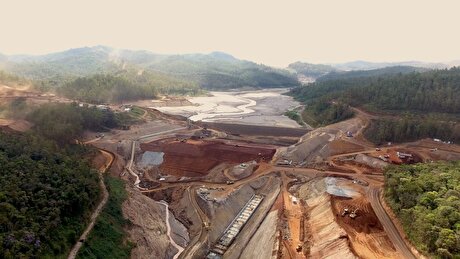
Average daily gasoline consumption exceeds 100m liters

According to Afshin Mahdavi, the director of planning at National Iranian Oil Products Distribution Company (NIOPDC), daily gasoline consumption in the country stood at about 87 million liters in the previous year’s same four months.
NIOPDC has also distributed, on average, 107.6 million liters of diesel every day during the mentioned period, Mahdavi said.
Managing and optimizing fuel consumption in the country is one of the priorities that the Oil Ministry and, accordingly, NIOPDC has put realizing this goal atop agenda, however, the significant increase in gasoline consumption in the current year has raised many red flags so that energy officials are concerned that the country might need to import gasoline once again.
Back in March, NIOPDC announced that average daily gasoline consumption in the country increased 27 percent during the Iranian new year holidays (March 16-April 1) as pandemic-related restrictions eased and traffic rose.
As reported, average daily gasoline consumption in the country reached 112 million liters during the mentioned 17 days.
Having a production capacity of nearly 120 million liters per day of gasoline, Iran currently has also the capacity to store three billion liters of the strategic fuel.
Although the Islamic Republic is currently self-sufficient in gasoline production, fluctuations in consumption at different periods through the year have led to the creation of storage facilities across the country to manage the sustainable supply and distribution of gasoline.
These tanks will help the country’s refineries continue operating at full capacity if on certain days of the year (such as the Nowruz holidays) gasoline consumption rises significantly, and also prevent any interruption in the supply of the fuel if consumption increases drastically.
In this regard, the capacity of the country’s gasoline storage facilities has increased in recent years, so much so that according to the National Iranian Oil Products Refining and Distribution Company, the volume of gasoline storage has increased from 1.8 billion liters to more than three billion liters.
Source: Tehran Times


SAIL Bhilai Steel relies on Danieli proprietary technology to expand plate mill portfolio to higher steel grades

Alba Discloses its Financial Results for the Second Quarter and H1 of 2025

Fortuna rises on improved resource estimate for Senegal gold project

US slaps tariffs on 1-kg, 100-oz gold bars: Financial Times

Copper price slips as unwinding of tariff trade boosts LME stockpiles

Codelco seeks restart at Chilean copper mine after collapse

Why did copper escape US tariffs when aluminum did not?

Fresnillo lifts gold forecast on strong first-half surge

NextSource soars on Mitsubishi Chemical offtake deal

Samarco gets court approval to exit bankruptcy proceedings

Hudbay snags $600M investment for Arizona copper project

Discovery Silver hits new high on first quarterly results as producer

Trump says gold imports won’t be tariffed in reprieve for market

AI data centers to worsen copper shortage – BNEF

Uzbek gold miner said to eye $20 billion value in dual listing

Peabody–Anglo $3.8B coal deal on the brink after mine fire

De Beers strikes first kimberlite field in 30 years

Minera Alamos buys Equinox’s Nevada assets for $115M

OceanaGold hits new high on strong Q2 results

Hudbay snags $600M investment for Arizona copper project

Discovery Silver hits new high on first quarterly results as producer

Trump says gold imports won’t be tariffed in reprieve for market

AI data centers to worsen copper shortage – BNEF

Peabody–Anglo $3.8B coal deal on the brink after mine fire

De Beers strikes first kimberlite field in 30 years

Minera Alamos buys Equinox’s Nevada assets for $115M

OceanaGold hits new high on strong Q2 results

South Africa looks to join international diamond marketing push














